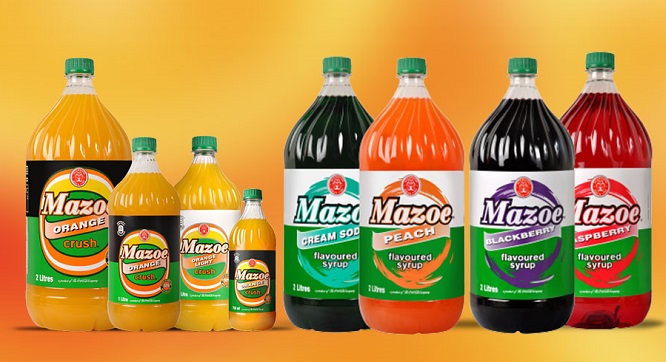Why ‘burying one’s head in the sand’ won’t work

Lenox Lizwi Mhlanga
The most disconcerting feeling that we public relations people can have is one where we see a crisis slowly consuming an organisation. And they seem to be paralysed to deal with it. Be it a competitor or a distant entity, it’s all the same.
It is like a doctor who sees a medical case that requires urgent attention, but the patient seems oblivious to the dire consequences of negligence or inertia.
It is easy to dismiss inaction when a company’s reputation comes under threat for ignorance on the part of those who should act over it. If only one knew the value of the reputation being torn to pieces.
A colleague put it this way: “A mother who knows the pain of giving birth will feel the pain when another woman’s child is harmed in any way. So, it is with a reputation in the throes of a crisis.”
The economic environment is a jungle with social media becoming a critical risk, a clear and present danger to companies and the way they do business.
We say that if the board of directors and executives are not talking about reputation risk, the largest, scariest and least manageable, then they will one day be sorry they didn’t.
In the era of 24/7 news cycle, communicators should be armed with a new way of thinking. One that goes beyond crisis planning to give senior management strategies that pull together numerous leaders from multiple functions to assess and act. This is done to reduce the likelihood and impact of potential negative events.
Therefore, it could befuddle the mind that huge corporations such as Schweppes Zimbabwe and the Coca-Cola Corporation, bottlers and franchise holders of the Mazoe brand respectively, put purposefully and expensively built reputation on the line by maintaining “strategic silence.”
When an organisation chooses to bury one’s head in the sand in the face of a crisis, it’s a sign that either they do not value responding timely in the age of social media, or they simply have little concern about the concerns of the consumers likely affected.
Here is the scenario: The manufacturers of Mazoe Orange Crush, a very popular range of drinks distributed locally and, in the region, decide to change the ingredients of its products in a way that greatly alters its taste (as well as the perceptions) of its multitude of fans. Never mind the fact that the said drinks are an iconic but an age-old institution.
The consumers understandably horrified and readily took to social media to complain about the unpleasant aftertaste the products of the company left in the mouth. As the crisis continued to simmer, a widely read section of the “lynch mob,” prowling on Twitter went on to speculate that adversely affect the health of consumers.
All the while, there was a deafening silence from the manufacturers. This allowed the narrative to get a life of its own and transform into several unpalatable assumptions, some without sound scientific backing. The alarmists joined the fray quoting outdated studies made in the past century about the harmful effects of the added ingredients, Tartrazine and Aspartame.
Aspartame, for example, is approved by the Food and Drug Administration (FDA) in the United States and is found in more than 6 000 foods worldwide and about 5 000 to 5 500 tonnes are consumed every year in the USA alone.
However, recent medical studies suggest that policymakers eager to impose a soda tax may also want to include diet drinks because these sweeteners may contribute to chronic diabetes and cardiovascular diseases as well, writes Eunice Chang in the Washington Post.
Consequently, a hashtag movement #BringBackOriginalMazoe to boycott the products has been hatched. The outrage has the potential to reach fever pitch, duplicated on many other platforms such as WhatsApp (God-forbid!), Facebook, and Instagram.
What has angered people on social media is the auto-generated response by Schweppes devoid of any acknowledgement of the concerns and bereft of detail.
Another telling dimension added is when some of the pseudo-pundits begin touting the difference between the products under siege with those of a competitor. Now is a red flag to any company hoping to retain market share.
Strategic communicators can only speculate what could be going on behind the scenes. But first, let us look at what is wrong.
When fundamental changes to the composition and utility of a popular product are made, the most critical stakeholder must be consulted. Consumers should not be left of the whole equation.
The question we ask is at what point was the consumer consulted about impending changes. If they were, how was this done and what was the representation and reaction of such a sample?
Secondly, if any change was necessary and inevitable, what kind of campaign was embarked on to educate and inform the consumers about this?
The changes could have been well justified. There are genuine concerns about sugar-related ailments worldwide. Yet without some form of pre-testing (or tasting) exercise, one would not have anticipated the level of backlash experienced when consumers felt they were “ambushed” by the manufacturer.
By maintaining “strategic silence,” the manufacturer lost the narrative to speculators, scare-mongers and influencers to stock up the fire. A simple acknowledgement of the concerns could have done a lot to allay the fears of the consumers which could prove unfounded if empirical evidence was shared. This would then be followed by what the company was doing to address them.
Earlier on, I alluded to an attempt by concerned PR practitioners to lift the corporate veil thrown around the sweltering crisis. One possibility is that the company could be paralysed by protocols. Schweppes Zimbabwe being a mere subsidiary of a larger corporation, and just a bottler, crisis issues could be the purview of the global office.
This being the age of fast online communication, which got Schweppes in this mess in the first place, one would have expected swifter action to douse the inferno. But again, this might seem to a distant global corporation HQ, a storm in a teacup.
Such a “tiny” crisis cannot surely ignite a worldwide scare since the products in question are only consumed by a minuscule fraction of consumers in comparison. It will surely die away, they assume.
Yet, we are speaking about the image of the iconic drink, one that generations have sworn by — one of the few positive things that this country can boast about as truly ours.
For PR practitioners like me, it’s an opportunity lost. A telling case study that illustrates that sticking one’s head in the sand not only is costly but shows a blatant disregard for the genuine concerns of faithful consumers.










Comments